Home » Construction Services (Page 11)
Category Archives: Construction Services
How to Go Solar – Do It Yourself and Save Money
There is an increased awareness these days about green technology. As the world faces energy problems, the demand for solar power equipment and services has grown tremendously. Solar energy is free and environmentally friendly. So why not seriously consider solar power as an option for your home?
Homeowners are now installing solar power systems, and the growing number of such installations indicates the increasing interest in energy conservation worldwide. There are three critical elements in a solar power setup: solar panels, solar power converters, and solar mount. All three can be installed by homeowners, however, for those who know a great deal about these energy-efficient devices, installation can be a little more complex. For those homeowners without a lot of experience with these devices, professional installation is advised. However, most experts would suggest residential customers that are up for the challenge to do the work themselves.
The panels or solar cells, as it is called, are used to collect the sun’s rays and convert them to electricity or gas. The number of solar cells required to produce sufficient energy will depend on the household electrical needs. Typically, each panel can hold enough energy for one or two standard-sized American houses.
The solar panels installed should be mounted on the roof, ideally at an angle so that maximum sunlight is received. A flat surface is preferred, but a slope can be used if desired. Mounting the panels is the first step in the process, followed by installation of the battery and the power inverter. Battery installation is important because the amount of energy needed to charge the battery depends on how much total energy is available during the day. Without the battery, the total cost of the system is going to be much higher.
In many areas, the cost of purchasing and installing a solar panel system may be covered in one or two payments. In some areas, the amount of money homeowners spend on the system will include the cost of batteries and other equipment. The number of months the system is expected to provide adequate energy is another factor that must be considered before making a purchase. The longer the system is expected to last, the more energy is needed to recharge the batteries. Most people are able to pay for the panels and batteries over the course of several years, with the balance paid back after the energy is used.
Installing the solar panel system may be required by local authorities. In addition, utility companies may need to approve the installation. Before a homeowner installs the system, he or she should be sure that there are no energy interruptions due to inclement weather, such as cloudy days or overcast skies. Also, the homeowner should make certain the system receives plenty of sunlight during the day. Although some areas are known for having plenty of sunlight, others do not have sufficient sunshine to meet the energy needs of the panel system. If the homeowner wants to use less solar energy, it’s a good idea to find out ahead of time how much sunlight will be available in the area.
In areas where the amount of sunlight is known to be scarce, solar systems might not be the most practical option. Even if the amount of sunlight is abundant, homeowners should realize that using the sun’s energy requires more energy than is required by utility companies. In most cases, installing a solar system will require a large upfront investment.
Many people decide to go solar power systems because they want to do their part in helping the environment. The system is relatively inexpensive and most people are able to pay the initial installation costs, which will then pay for itself over time. For those who live in remote areas where access to electricity is limited, the power system can often meet all of their energy needs, with a little bit of added help from utility companies.
Bidding starts for Midlands £28m Camp Hill Line stations
West Midlands Combined Authority has started prequalifying firms to design and build three stations on the Camp Hill railway line reopening in the Midlands.
The Camp Hill line stations closed during 1941 and since then the line has been used only by freight and non-stop passenger services.
Reopening for passenger services involves constructing three stations at Moseley, Kings Heath and Hazelwell including supporting rail infrastructure works.

These new stations will provide regular train services into Birmingham New Street, with quick journey times offering commuters a genuine alternative to their car.
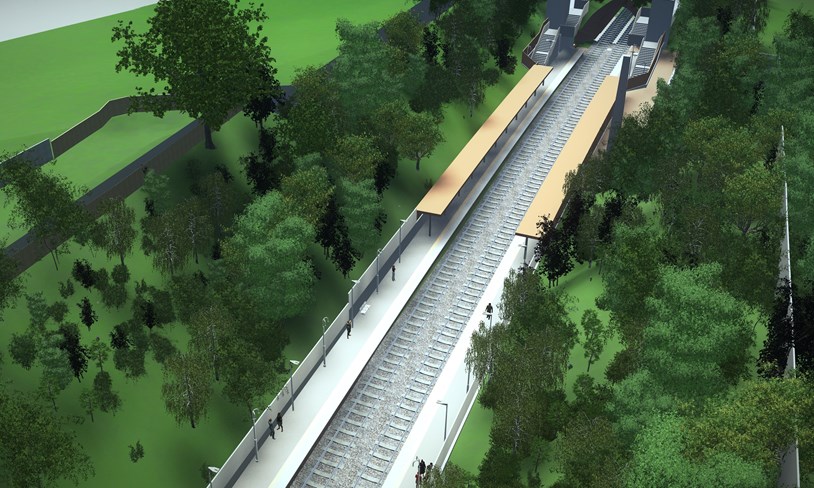
Authority procurement chiefs plan to use an NEC 4 target cost contract including clause X1 to alleviate contractors’ risk on material price fluctuations on volatile material like timber, concrete and steel.
Firms have until the end of August to submit an interest in bidding for all three stations. Shortlisted firms will then be invited to bid on 30 September.


Did you miss our previous article…
https://www.arizonasolarsociety.com/?p=224
Plans in for £180m Milton Keynes tower scheme
Developer First Base and investor Patron Capital have submitted plans for the £180m redevelopment of the Saxon Court former council office building in Milton Keynes.
The 2.35-acre site, which will be known as MK Gateway, will see the original former council building extended upwards by three floors and a landmark 27-storey apartment built beside it.

The MK Gateway project is designed by Rogers Stirk Harbour and Partners
The overhauled Saxon Court building will provide office space while the existing large atrium space will become an indoor public square, with local independent food, drink, and leisure spaces, connected to an outdoor ‘village green’.

MK Gateway will provide the equivalent size of 19 tennis courts worth of publicly accessible space, creating a new neighbourhood to live, work and play.
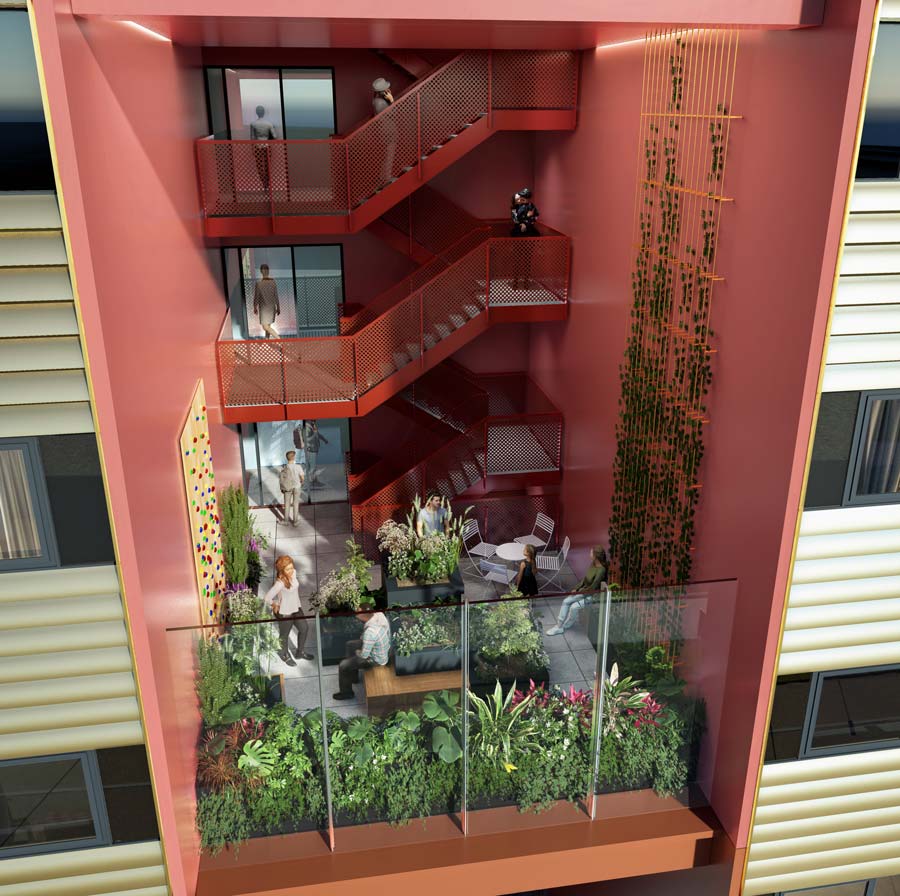
Vertical gardens integrated into the residential building are claimed top be a first for the UK
Delivering 288 flats for rent, the vertical village building will feature 11 vertical gardens, totalling 4,500 sq ft, for residents to share and enjoy.

“We believe this highly sustainable development will support Milton Keynes’ growth ambitions, celebrate the city’s innovative spirit, and generate significant long-term benefits,” said Steve Eccles, Project Director, First Base.
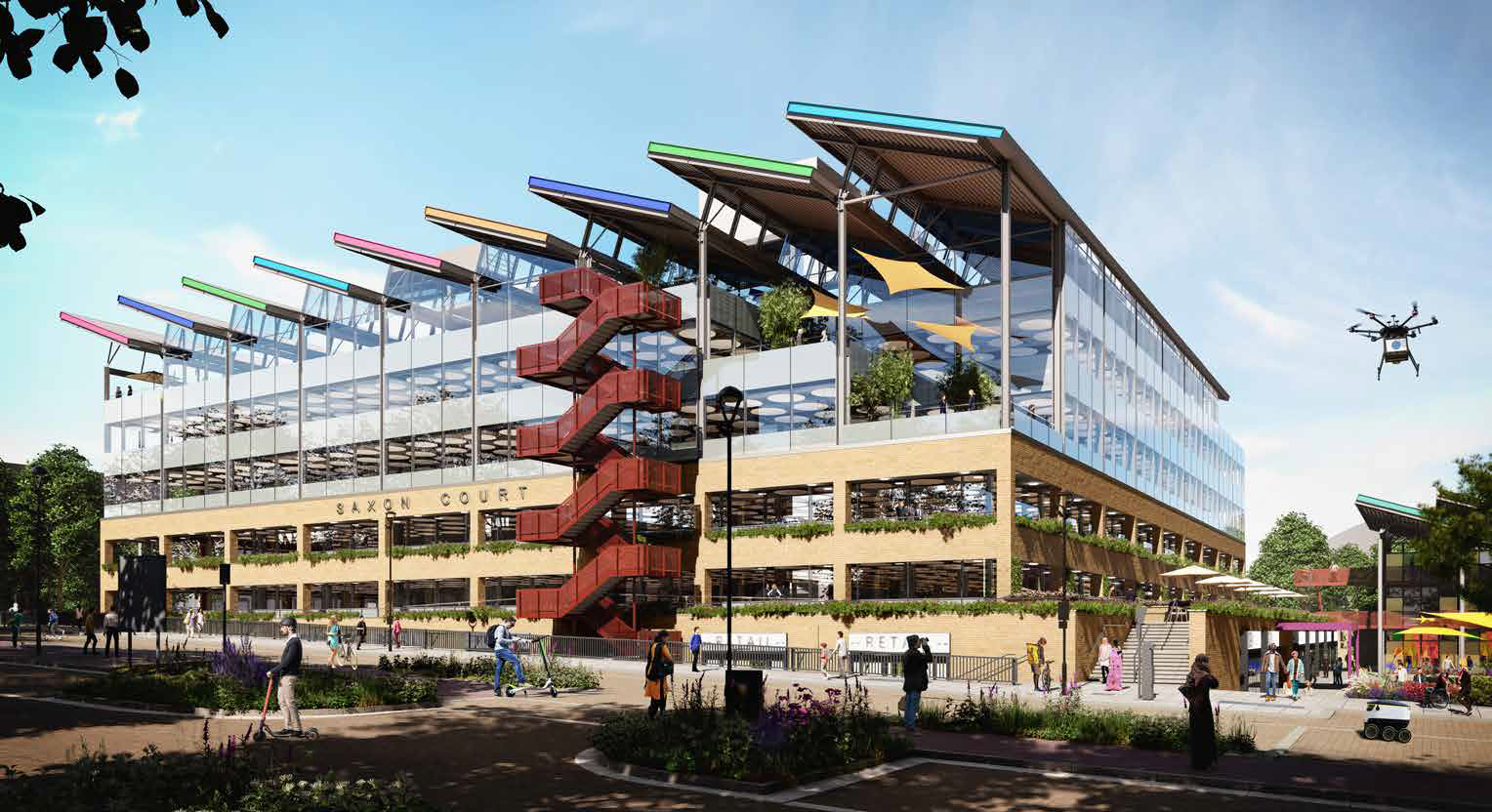
Remodelled Saxon Court building will provide offices and a new indoor public square
If approved, construction should start before the end of this year.


Did you miss our previous article…
https://www.arizonasolarsociety.com/?p=215
Delivering a Major Vaccine Production Facility on Time, Without Compromising Quality
Blue Projects is a highly experienced project management company and a preferred strategic project partner for the world’s leading blue-chip companies. The complexity of multi-disciplinary projects inspired Blue Project’s founders to surround themselves with a highly innovative and flexible team of leading professional engineers that shared the same passion and commitment to project excellence.
The problem
Blue Projects is a project management company with a global footprint covering Romania, Poland, Russia, the United Kingdom, Belgium, Czech Republic, the Netherlands, Germany, Africa and North America. The team provides project and engineering solutions across industry sectors for a number of major global players. Their services include construction management, design and engineering, health and safety management, commercial management and production lines relocation.
During 2020, the global Covid-19 pandemic caused chaos across the globe. As the end of the year drew to a close, there was a collective sigh of relief when national health regulators began approving the use of a number of vaccines which provide immunity against the highly transmissible and potentially fatal virus. Nevertheless, the global demand for this vaccine far outstripped supply, and with a worsening picture during the winter months of early 2021, it was imperative that the construction of production facilities was stepped up.
“When it came to our project details, we knew that digital construction solutions could play an important role in ensuring communication and collaboration was seamless and smooth given we had to work to such tight timescales.”
Michal Zajac, Senior Architect and BIM Manager for Blue Projects was a lead partner in supporting the design and construction of a vaccine production facility to contribute to the global effort to provide vaccines to the most vulnerable people in our societies. Blue Projects needed to make sure this facility was built quickly; the design and construction phase would run in tandem but it was absolutely essential that safety and quality was not compromised.
“When it came to our project details, we knew that digital construction solutions could play an important role in ensuring communication and collaboration was seamless and smooth given we had to work to such tight timescales,” reflects Michal. The technology solution needed to facilitate several factors including coordinating teams across different geographies and time zones, improving the design process to aid collaboration between design and site teams as well as improving communication with supply chain partners.
“We needed to be able to work in a 3D environment on design models to better manage the project schedule, as well as track issues resolution and design changes,” says Michal. For Blue Projects, setting the project up correctly from the outset would be crucial as it would have a direct impact on contributing to the global health crisis.
The solution
Blue Projects’ client, a major healthcare manufacturer, specified that a common data environment should be used on the project to ensure communication between stakeholders was the best it could be. Many of the project team members were working remotely from different locations, so finding a solution that supports seamless collaboration in a virtual world was key. The team could not risk time being lost due to miscommunication or confusion about project data. Blue Projects started using Autodesk Construction Cloud’s BIM 360 solution from the start of the project as their single source of truth for project data and established a number of digital workflows using the technology.
“To deliver the production facility quickly, the project was set up with the design and construction phases running in tandem.”
“To be able to communicate effectively, we needed one central repository for all project documentation,” says Michal. “But to collaborate effectively and efficiently, we needed to set up a number of digital workflows.” The team used BIM 360 for review and approval processes with their client to quickly agree and communicate design changes. In fact, more than 700 design reviews were created on the project.
As well as this, Blue Projects partnered with Autodesk’s customer success team to apply enhanced design and coordination workflows. “Autodesk’s deployment specialists were on hand to support us whenever we needed help,” reflects Michal. “The customer success team also supported us to get our teams set up for success early. They offered project team and champion training. The training enabled us to kick off the project and get started with internal and external users straight away,” says Michal.
When it came to planning and executing, using BIM 360 as the single source of truth for the project team meant that design changes could be communicated amongst project partners quickly through proactive clash and issue detection. Michal comments: “To deliver the production facility quickly, the project was set up with the design and construction phases running in tandem. Our coordination team needed support in implementing workflows that would identify design clashes early and the customer success team at Autodesk supported us in connecting our design authoring tools like Revit and Navisworks into BIM 360 so all the data we captured could be reflected in our model. This meant we could detect clashes before these go out to the teams on sire. This ultimately saved us hundreds of hours of time.”
For Blue Projects, delivering to the project schedule was crucial to not slow down progress but quality could not be compromised either. “We needed to deliver to absolute precision as we could not afford to have any major reword or defects,” reflects Michal. Using the issues management feature in BIM 360 to report design clashes meant the team were able to avoid costly reworks that could delay project progress. As well as this, internal and external collaborators like supply chain partners had access to critical project information wherever and whenever they needed it.
Michal says: “Collaborating across geographies during a global pandemic where teams were working remotely and on-site is a challenge for any project. But working collaboratively in this way with extremely tight project timescales made it that much more difficult. BIM 360 allowed all project collaborators to have access to real-time project data from anywhere.”
The results
The design phase of the project was completed earlier than planned schedule based on the experience of similar projects, meaning that Blue Projects not only completed this critical stage of the project earlier than planned, but also gained time to focus on the construction phase and support the teams responsible for installing key production equipment. These time savings meant the execution phase started earlier and the onsite construction got underway quicker on certain milestones.
“If we had not used BIM 360, we would have needed…thousands more hours to dedicate to manually identifying clash and issues detection to avoid the need for re-work on site.”
By capturing issues early through proactive clash and issues detection using BIM 360, Blue Projects and their client were able to gain time which they could focus towards supporting other critical construction programmes. With 1700 coordination clashes detected during the design phase and over 700 reviews and approval workflows executed with their client, Blue Projects have been able to prioritise quality and safety through a more connected construction process.
“Reducing the number of hard clashes that would have happened on site has meant that the team were able to use technology to speed up the time it took to carry out key processes without risking the quality we delivered for our client. If we had not used BIM 360, we would have needed hundreds and thousands more hours to dedicate to manually identifying clash and issues detection to avoid the need for re-work on site,” says Michal.
Gaining valuable project time without compromising on quality and incurring additional project costs means Blue Projects have been able to work more effectively with their client to improve project outcomes like improved design solutions and materials. Not only this, but the project team have also improved remote communication practices and improved the way they collaborate in a virtual world. “With the major changes we’ve witnessed over the last year in how and where we work, it’s been fantastic to work on a project that has delivered valuable outcomes for our client and established better ways of working in a virtual environment,” states Michal.
Not forgetting, and most importantly of all, a major vaccine production facility has kept to its project schedule. This means much needed vaccines will be able to be produced, delivered, and distributed on time to countries and individuals who need them most.
The post Delivering a Major Vaccine Production Facility on Time, Without Compromising Quality appeared first on Digital Builder.
Construction Resource Management: Tips and Tools for Success
Staying on top of construction resource management is an absolute must. With today’s increasingly complex projects and tighter-than-ever timelines you simply can’t afford to misallocate the resources you have at your disposal.
There’s also the issue of labor shortages in construction. Research by the Associated General Contractors of America and Autodesk revealed that 80% of contractors are having difficulties finding qualified workers. As the industry continues to grapple with manpower challenges, you need to be smart about how you handle and assign labor resources.
This article will cover all that and more.
We’ll dive into the ins and outs of construction resource management, plus discuss best practices and tools that can help you ensure that all your resources are allocated effectively and are put to good use.
Let’s get started.
What is Construction Resource Management?
Construction resource management is the practice of planning and managing the use of construction resources, to ensure that projects are delivered on time and within budget.
Typically done by construction managers or project managers, construction resource management involves many tasks, including the following.
- Monitoring the amount of resources available — everything from time and manpower to equipment, materials, and facilities.
- Allocating and reallocating resources based on project needs and timelines.
- Tracking and optimizing the use of resources.
The goal of construction resource management is to maximize the utilization of resources and reduce waste, ultimately meeting the project’s objectives in the most efficient and cost-effective way possible.
Why Workforce Planning is Essential
Workforce planning — which is a key component of construction resource management — involves monitoring and allocating team members across projects.
Effective workforce planning entails monitoring schedules, team bandwidth, and jobsite capacities. Managers need to balance all these components to ensure that each project is well-staffed and that team members aren’t over- or under-allocated. It also involves reviewing the company’s manpower resources and forecasting workforce needs, so the firm can recruit accordingly.
Workforce planning is critical, particularly amidst issues like labor shortages. When you have limited manpower available, it’s even more important to keep a tight handle on your workforce.
There’s also the matter of labor logistics. The world is starting to open back up and everyone is eager to put the pandemic behind us, but some of the issues brought about by COVID-19 will linger well into 2021.
Some jobsites may continue to have limited capacity, so it’s essential to map out how teams are distributed in the field. Being mindful of capacity limits will keep construction sites safe and ultimately prevent any pandemic or health-related issues and delays.
Benefits of Construction Resource Management
Now that you know the fundamentals of construction resource management, let’s discuss the benefits that you’ll gain from the practice.
Lower Construction Costs
When you don’t have a handle on how much resources you need for your projects, you may end up allocating either too much or little to certain activities. This leads to double-work, wasted time, and delays — all of which add more costs to the project. For instance, the mismanagement of equipment or materials can result in excess spend that can be better used elsewhere.
Proper construction resource management can prevent such issues from happening. When you’re closely tracking the use of resources and reallocating them based on the project’s needs, you can ensure that time and money are always well-spent.
Higher Productivity
By implementing construction resource management, you can see to it that team members are assigned to the right place and they have what they need (i.e., equipment, materials, and supplies) to do their jobs well.
As such, teams are able to be more productive. There’s less downtime or waiting around, plus they can do their best work because they have the necessary resources at the right time.
Increased Visibility into Your Resources
Construction resource management gives you better visibility into your resources. The practice involves closely monitoring resource utilization, so you always know what you have at any given time.
This, in turn, helps you make well-informed decisions on how to use and allocate construction resources.
Ability to Be More Agile and Adaptable
It’s not uncommon for projects to run into sudden changes. If you’re not prepared, you may end up with inadequate resources to cover unexpected needs.
You can avoid these situations by implementing proper construction resource management. When you constantly stay on top of how your budget, manpower, equipment, and materials are used, it’s much easier to re-evaluate and reallocate resources to cope with unforeseen project changes.
Creating a Resource Management Plan
One of the first steps to effective construction resource management is mapping out a plan for how resources will be allocated and used. While the specifics of this process will vary depending on your teams and projects, here are some general steps and considerations to keep in mind when crafting your construction resource management plan.
Determine the project timeline and all activities associated with it. Iron out all the necessary details involved in the project. Itemize the tasks and activities that need to be completed and specify the deadlines for each milestone.
Determine the resources you need and the right allocations. Use the information from the previous step to figure out the right resource allocations for the project. At this stage, you’ll need to calculate the amount of resources required, assign them to the appropriate activities and project phases, and indicate when you’ll need them.
One thing you could do at this stage is to tap into your experience as well industry standards and previous project data to figure out the best allocations.
Secure the necessary approvals. The next step is to get approval for the resources that you’re planning to use. Coordinate with the necessary parties and decision makers and ensure that you have the authorization to use the resources at the appropriate time. Be sure to complete this step before the project kicks off.
Optimize and retool your plan when necessary. Your construction resource plan shouldn’t be set in stone. Keep an eye on it, even when the project is underway and don’t be afraid to pivot or launch a plan B if unforeseen issues arise.
Top Innovations for Construction Resource Planning
Construction resource management shouldn’t be done manually. Equip yourself and your team with construction technologies that streamline the process of planning and allocating resources.
Consider the following.
BIM 360 Plan
BIM 360 Plan offers robust capabilities to help you view and monitor supply chain and jobsite resources. The software’s customizable project views enable you to see work plans in List, Ganntt, or Swimplane view, so whether you’re looking for an itemized list of resources and activities or prefer to get a high level view of the project, you can do so easily with BIM 360 Plan.
Bridgit
Bridgit is a leading workforce intelligence solution for construction pros. An excellent tool for planning and allocating manpower resources, Bridgit makes it easy to view which project roles are unfilled, so you can plan accordingly. It also has detailed reporting that offers insights into workforce utilization and project pipelines, enabling you to plan for your manpower needs.
Triax
Construction sites have many moving parts—including workers, equipment, and other materials—that need monitoring. However, the dynamic and fast-paced nature of jobsites make it difficult to do so. Enter Triax’s IoT solution designed for rugged working environments, Spot-r Mesh provides real-time visibility into all the resources you have on site. It’s low power requirements and easily deployable hardware give you actionable insights into your workforce and equipment on the construction site, making it simple to know resource location, utilization, and more.
Kwant.ai
Need detailed insights into workforce activities? Kwant.ai has you covered. The solution uses AI and IoT to monitor worker location and activities, giving you powerful intel for planning and allocating manpower. With Kwant.ai, you can easily see how workers are spending their time, which then helps you identify inefficiencies or areas that need to be optimized.
SkillSmart
SkillSmart’s compliance reporting and tracking software has excellent data and analytics tools to help you plan and manage project resources. SkillSmart InSight not only lets you track labor and compliance, it also provides real-time reports that cover payroll, contractor wage rates, and supplier tracking, among others.
LaborChart
Another useful tool for labor allocation, LaborChart has several features for managing your construction workforce. One particularly helpful tool is the software’s Labor Allocation feature, which gives you a visual representation of your labor pool based on projects, trades, regions, and more.
Proper Construction Resource Management is a Must
You can’t complete projects without the right workers, equipment, and facilities, which is why it’s critical to plan and allocate your resources effectively. So, take the time to understand each project’s needs then figure out the right resource allocation. To make things easier, use technology to automate various tasks and generate the necessary reports.
For more best practices on construction management and technology, subscribe to our blog and get regular tips, stories, and news delivered to your inbox!
The post Construction Resource Management: Tips and Tools for Success appeared first on Digital Builder.
Did you miss our previous article…
https://www.arizonasolarsociety.com/?p=171
Plans go in for £48m Derby arena
Developer St James Securities have submitted a full planning application to Derby City Council for a new 3,500 capacity entertainment and events venue at Becketwell.
The £48m venue will be located on the site of the former Pink Coconut nightclub and Laurie House offices at the heart of the wider mixed-use Becketwell development.
The purpose-built venue will be a fully flexible, scalable space capable of staging concerts, stand-up comedy, family shows, musical theatre, conferences, and exhibitions.

The main auditorium will have a maximum capacity of 3,500 and offer a range of different event configurations including a fully seated layout for up to 2,100.
Subject to planning consent being granted at a meeting in October, construction is set to start in early 2022, with handover to the operator in 2024.
The new performance venue will be owned by Derby City Council and run by operator ASM Global.

Oliver Quarmby, managing director of St James Securities, said: “A new large-scale venue is a key component of Derby’s masterplan for the city centre which has been developed collaboratively between the public and private sectors and we are tremendously excited to be working on this ambitious scheme to bring an outstanding, modern performance venue to the city.
“We have created a great scheme which will fill a significant gap in the city’s cultural landscape. This flexible venue will cater for major music and comedy acts as well as theatre content. The conference and events capability will support the growth of the region’s business community.
“The performance venue is set to ‘turbocharge’ the entire Becketwell scheme, allowing us to bring forward a new multi-storey car park and hotel and will be key to the future reinvigoration and repositioning of Derby city centre.”

Work is already underway on the £30m phase one of the scheme, which includes the construction of 259 build to rent apartments by GMI Construction.
Future planned phases of the scheme include up to 25,000 sq. m of new grade A offices and commercial space, a hotel and a multi-storey car park.


Did you miss our previous article…
https://www.arizonasolarsociety.com/?p=164
4 Ways to Improve Collaboration in Construction

As construction projects become more complex, effective collaboration is increasingly becoming a key factor in completing projects on time and within budget while delivering a quality product to the client. Good collaboration leads to many benefits like innovation, time and cost-saving, added value for the client, reduced errors, and unnecessary rework.
![]()
Did you miss our previous article…
https://www.arizonasolarsociety.com/?p=127
PPI Measures of Construction Material Costs Are Still Shouting Warnings
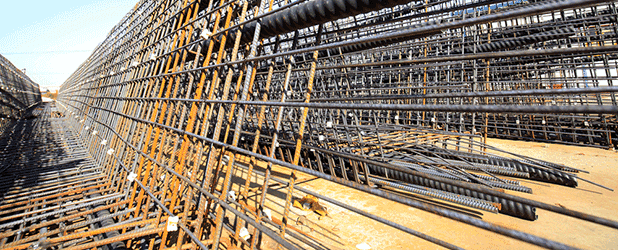
This article focuses on the latest U.S. building material cost increases as laid out in the Producer Price Index data set compiled and published by the Bureau of Labor Statistics.
![]()
Did you miss our previous article…
https://www.arizonasolarsociety.com/?p=55
40+ New Product Updates for Autodesk Construction Cloud
The Latest Across Autodesk Construction Cloud Unified Platform, Autodesk Build, Autodesk BIM Collaborate, Autodesk Takeoff, BuildingConnected, BIM 360, and Pype
With construction’s busiest season in full swing, our product teams have been hard at work—rolling out new features and updates to make Autodesk Construction Cloud even better. We’re thrilled to share more than 40 releases and enhancements across Autodesk Construction Cloud products.
From enhanced meeting views ensuring critical action items don’t get missed to smarter clash tolerance tools and more, read through for details on the latest product updates for Autodesk Construction Cloud.
Jump to releases for:
- Autodesk Construction Cloud Unified Platform
- Autodesk Build
- Autodesk BIM Collaborate
- Autodesk Takeoff
- BuildingConnected
- BuildingConnected Pro
- TradeTapp
- BIM 360
- Pype
Autodesk Construction Cloud Unified Platform
*=features on both Autodesk Construction Cloud unified platform & BIM 360 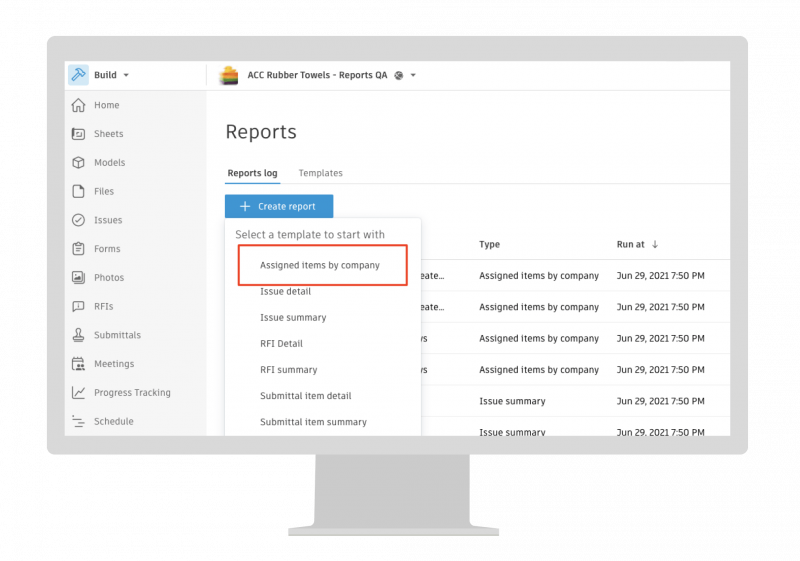
Data Connector | Reviews Data & Document Management Power BI Template*
Both BIM 360 and Autodesk Construction Cloud platform users can now extract document review data using Data Connector. This release adds to the document management related data extractions, including previously released sheets and transmittal data. This way teams can create custom dashboards in their own BI tools to better optimize document management workflows including driving better review processes.
Data Connector | Schedule Daily Refresh*
Both BIM 360 and Autodesk Construction Cloud platform users can now schedule extracts using Data Connector on a daily basis. This allows teams to get new data — refreshed every day — for use in other BI tools to ensure they always have the most up to date information.
Data Connector | Power BI Connector on EU Servers*
Both BIM 360 and Autodesk Construction Cloud platform users can now use the Power BI Connector in both US and EU accounts. Previously the connector early access was available only for US accounts.
Reports | Report Automation by Company
Autodesk Construction Cloud platform users can now automatically generate Issue Summary and Issue Detail reports that are specific to individual companies. Prior to this release there was not an easy way to see an overview list of which companies had open issues. Now project leaders can run issue reports and distribute specific reports to each company to better manage issues and improve resolution rates.
Reports | Issue Status Summary
A new Issue Status Summary report is now available in BIM 360 and will be coming out shortly for the Autodesk Construction Cloud platform. This new report highlights a list of issues by company and gives an overview of how many are unresolved, overdue, open, answered, closed, etc. This helps teams get better visibility into issue status for each company and promotes resolution.
Insights | Additional Partner Cards*
Several new partner cards have been added to the card library in both BIM 360 and Autodesk Construction Cloud platform. The Box, Progess Center, Aespada, Sitekick, Daqs.io, Join.Build, OneConstruct, AgileHandover, and Novade partner cards will have their own branded card. The following list of partner cards are accessible through copying and pasting links into the generic partnercard; Airtable, Embneusys, Hoyst, OpticVyu Construction Camera, and Quickbase.
Document Management | Custom Attributes in Project Templates
Setting up a common data environment on the Autodesk Construction Cloud platform is now easier and faster with the ability to add file custom attributes to project templates.
Autodesk Build
* = features in both Autodesk Build & BIM 360
** = features in both Autodesk Build & PlanGrid
*** = Autodesk Docs feature (available across all unified products)
**** = features in both Autodesk Build & Autodesk BIM Collaborate
***** = features in Autodesk Build, BIM Collaborate & BIM 360
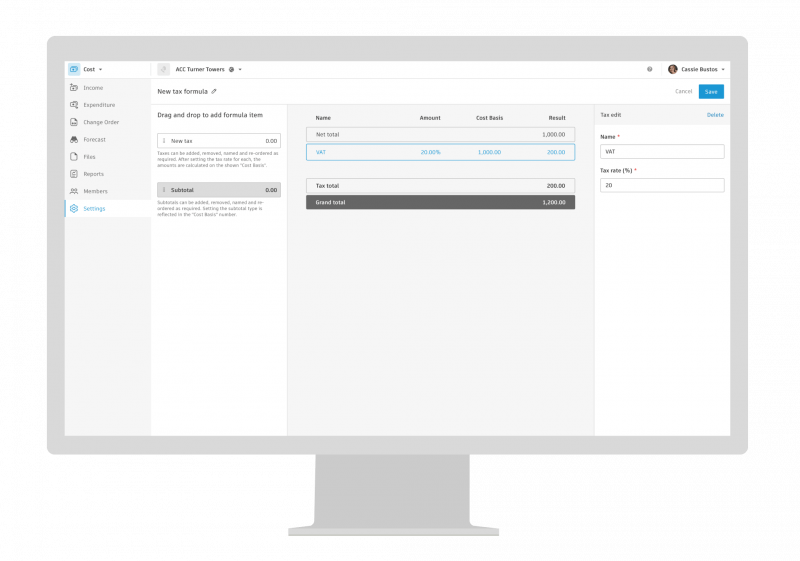
Cost | Custom Tax Calculations*
With the new custom tax calculation feature, teams can now easily calculate taxes in all cost processes, such as change orders and payment applications, and display the tax in the generated cost documentation to comply with requirements.
Handover | As Built Export [coming soon]
The As Built Export feature in Autodesk Build improves the handover process by giving teams the ability to easily filter, find and export all relevant as built information including Sheets, RFIs, and Submittals, as well as carrying over any links to other related documents — like files or photos. With the elimination of manual processes used in the past, this feature not only speeds up the handover process, but it also improves the accuracy of handover documentation and increases overall client satisfaction.
Assets Enhancements
The latest Assets releases for Autodesk Build allows project teams to bring more visibility into their asset workflows to improve decision-making. With these enhancements, teams can standardize asset tracking and commissioning and better understand historical data when it comes to an asset:
- Assets | Submittal Linking
- Assets | Configuration Data in Project Templates
- Assets | Activity Log
Meetings | Edit Meeting – General Information on Mobile
Autodesk Build users can now edit general meeting information on mobile including meeting title, date, time, and location. Additionally, users will be able to change the meeting status from Agenda to Minutes on their iOS or Android devices through the mobile application.
Meetings | Enhanced Meeting Views****
Autodesk Build and BIM Collaborate users now have a new, enhanced view of meetings to help better manage and address critical meeting items. In Project Home, users will have a snapshot of open, ongoing and overdue meeting items assigned for the project as well as to them as an individual. In the Meetings tab, users will have two enhanced views. The Meetings view will group all meetings by series, making it easier to manage and track all relevant meetings. The Items view pulls out items from all meetings and allows users to filter by flagged items, status, assignee, and due date, ensuring that critical action items get addressed and resolved.
Learn more about Enhanced Meeting Views here.
Meetings | Create Issue from a Meeting*****
Autodesk Build and BIM Collaborate users can now create an Issue right from a meeting instance. When adding an Issue as a reference to a meeting item, users will have the option to create an Issue, streamlining the process and ensuring that all issues are addressed.
Meetings | Reorder Meeting Items & Topics*****
Autodesk Build and BIM Collaborate users can now easily reorder meeting items and topics, making it easy to customize and organize all project information within meetings.
Photo Enhancements
The latest photo enhancements for Autodesk Build improve efficiency when adding, viewing, linking, and searching for photos:
- Photos | Autotags for Photos [beta]
- Photos | Photo Viewing Enhancements [coming soon]
- Photos | Reverse Referencing
Project Lifecycle | Sheet Sharing Across Accounts
Autodesk Construction Cloud platform users can how easily share sheets across different accounts. This helps gives teams the ability to share sheets with other external team members, like subcontractors or owners, who need access but are not a part of the main account. Sharing data across the entire project team is a critical part of ISO 19650 compliant workflows, and this release is the start of building out more data and file sharing functionality across the platform.
RFIs Enhancements
The latest RFI enhancements for Autodesk Build help to improve visibility to critical project information. With these releases, reduce manual work, improve customization, and enhance company and project data standards:
- RFIs | Custom Fields
- RFIs | Embed PDFs in RFI Reports
- RFIs | RFI Settings – View Closed RFIs
- RFIs | Project Templates
Submittals | Custom Types
For each project, Autodesk Build users can now add in custom submittal types or remove the preset types that are not required. This ensures all submittal information is correctly classified.
Learn more about this month’s product releases specific to Autodesk Build in our blog.
Autodesk BIM Collaborate
**** = features in both Autodesk BIM Collaborate and Autodesk Build
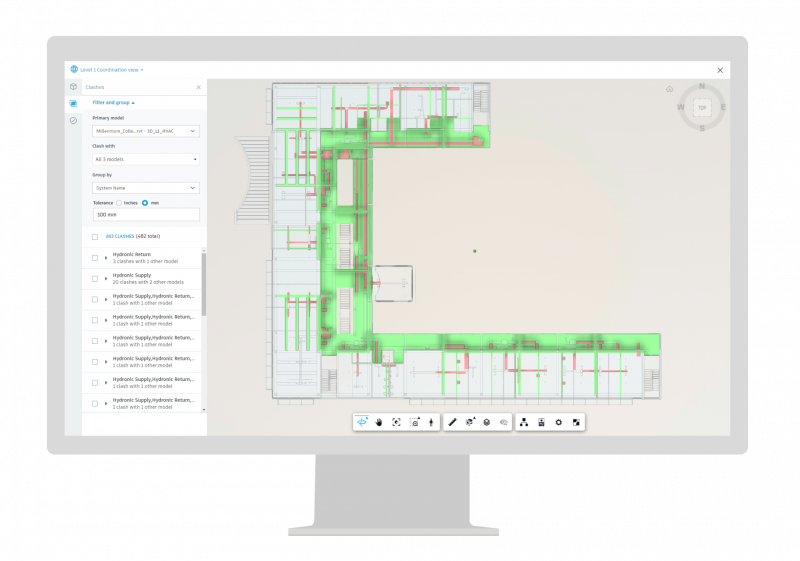
Model Coordination | Clash Tolerance Filter [coming soon]
BIM/VDC managers, designers, and specialty contractors can now organize their automatically generated clash results with greater control, using the tolerance filter. Set a distance in millimeters or inches to filter out clashes beneath the tolerance value. This easy-to-use filter empowers each user to prioritize major clashes first and refine more as the project progresses.
Model Coordination | NWC & IFC Support in Automatic Clash Detection [coming soon]
Support for NWC and additional IFC file exports enables quicker and broader automatic clash detection in model coordination.
Meetings | Enhanced Meeting Views****
Autodesk Build and BIM Collaborate user now have a new, enhanced view of meetings to help better manage and address critical meeting items. In the Meetings tab, users will have two enhanced views. The Meetings view will group all meetings by series, making it easier to manage and track all relevant meetings. The Items view pulls out items from all meetings and allows users to filter by flagged items, status, assignee, and due date, ensuring that critical action items get addressed and resolved.
Learn more about Enhanced Meeting Views here.
Autodesk Takeoff
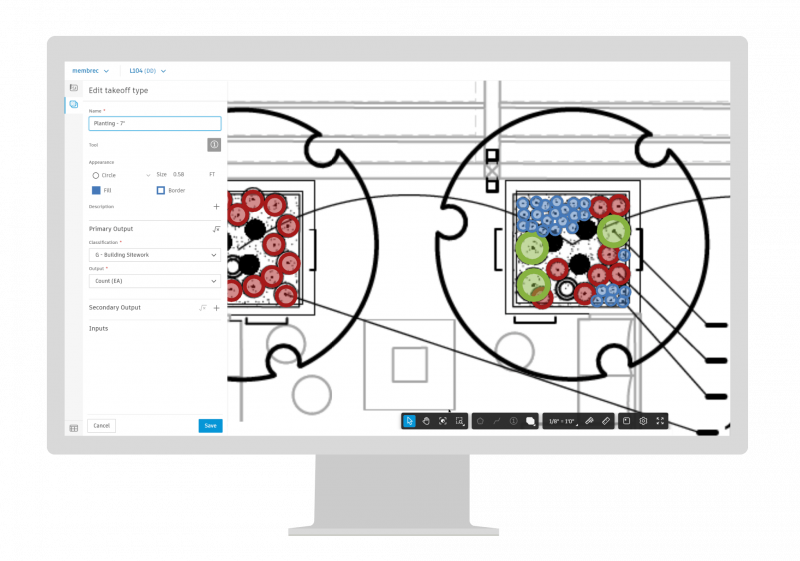
2D Takeoff Enhancements
Autodesk Takeoff users can now rotate and mirror takeoffs as well as resize takeoff markers.
Read Only API [coming soon]
In order to enable our customers to integrate their internal workflows with quantities in Autodesk Takeoff, we are enabling authenticated access to the Autodesk Takeoff inventory as read-only data through API.
Publish Revit Models to Sheets and Models From Files [coming soon]
Autodesk Takeoff customers will be able to publish Revit models directly to the Sheets and Models area in Autodesk Takeoff from Autodesk Docs. This creates a more streamlined process.
BuildingConnected
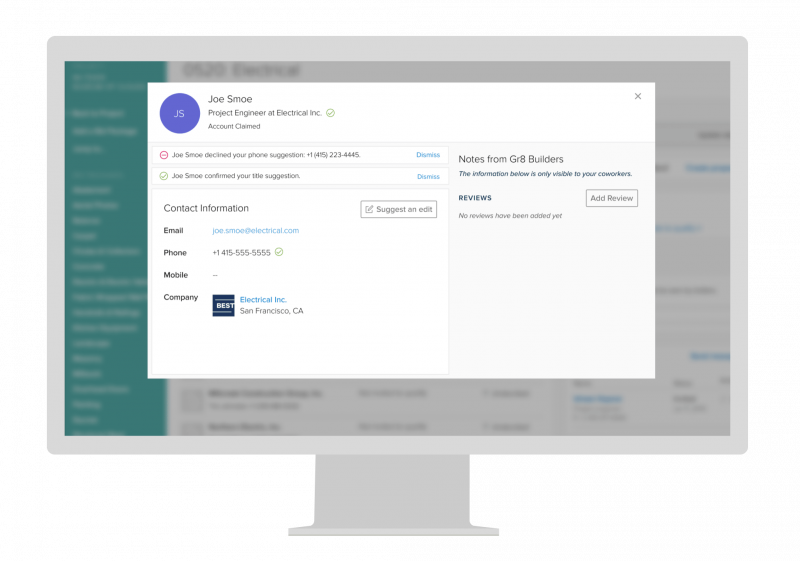
BuildingConnected Pro
Builders Network | Suggested Edits Improvements
BuildingConnected users that “suggest an edit” to another user’s profile can (1) see the status of the suggested edit (whether confirmed or declined) and (2) see or use the suggested edit throughout parts of the platform while the status is pending. This adds a layer of transparency and continues to showcase the power of the crowdsourced Builders Network.
TradeTapp
Exportable Blank Questionnaire
Whether a qualification questionnaire needs to be internally reviewed, a risk manager needs to guide a sub through a specific question on their custom form, or a trade partner needs a reference for document preparation — blank versions of all questionnaires in your TradeTapp account are now readily available to you anytime. Simply select the one you want, and export it to your computer.
Custom Email Templates
When communicating with subcontractors in TradeTapp, you can now use pre-built email templates to save you time. Create and store as many templates as you’d like in your TradeTapp account and easily access them when you need them.
BIM 360
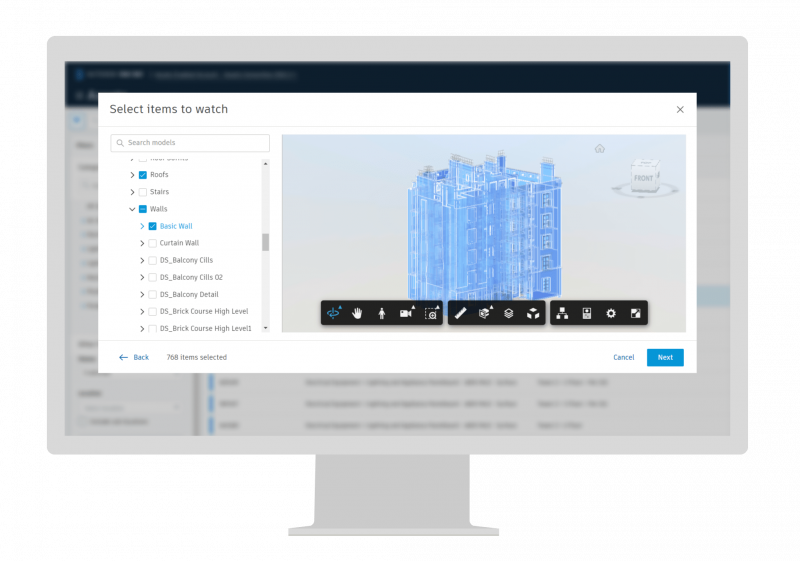
Admin Console | Limit Company Creation to Account Admins
BIM 360 users now have the option to limit the ability to create new companies to just account admins. This will eliminate the accidental creation or duplication of companies and standardize the company directory so that it is consistent and easier to manage.
Reports | Document Log – Adding Approval Status
BIM 360 users will now see a new field for ‘approval status’ within the Document Log report. This will help teams quickly understand what phase each document is at in the review cycle and quickly take action to push any delayed reviews forward.
BIM 360 Design Collaboration | Watch Groups
Design and construction teams can now monitor changes to elements of a Revit model most important to them by creating “Watch Groups” in the Change Analysis tool. Teams are automatically notified when items in watch groups change throughout the project.
This workflow enables users, especially project leads and designers, to stay informed on the most critical items they need to keep an eye on, saving time by eliminating tedious manual model queries and helping teams work smarter. Teams can also track unexpected changes within watch groups, helping to reduce risk and improve model quality overall.
Pype
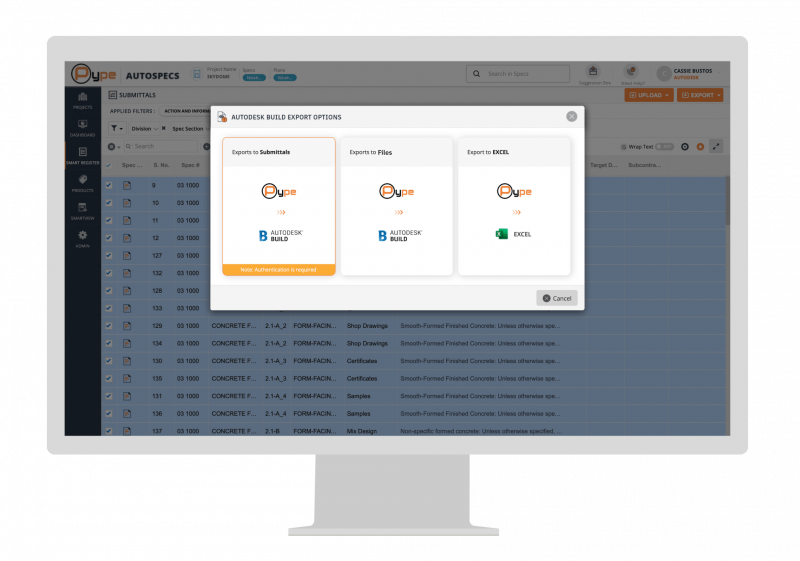
AutoSpecs | Autodesk Build Integration
Pype AutoSpecs brings efficiency, automation, and accuracy to the submittal process by automatically generating your submittal log. And now, with the Autodesk Build integration, teams can further streamline the submittal process by seamlessly transferring data from AutoSpecs directly into Autodesk Build for submittal management. Be more effective and efficient with AutoSpecs, an Autodesk Build integration.
Learn more about AutoSpecs here.
Stay in the Know for More Autodesk Construction Cloud Product Updates

The post 40+ New Product Updates for Autodesk Construction Cloud appeared first on Digital Builder.
APIJ Construction: Critical Role of Technology in “Response” Phase of COVID-19
The effects of COVID-19 on the construction industry across Asia Pacific including Japan (APIJ) are varied, and the recovery for construction companies across the region can be classified into three phases: “response”, “adaptation”, and “acceleration”. In this blog, we’ll dive into the “response” phase including a look at the technology the industry is adopting for this part of their recovery.
Each phase of recovery is accompanied by specific technology investments construction companies must make to aid their recovery — from initiating projects to reducing costs to survive, to adapting technologies to address gaps and new pandemic-induced requirements, and using new innovations to capture market share.
A recent IDC InfoBrief, sponsored by Autodesk, Road to Recovery: Overcoming COVID-19’s Impact on the Construction Industry with Digital Technologies, looks at each of these phases including the top technology investments at each stage of recovery. The InfoBrief found that 18% of construction companies surveyed across the region are in the crisis response phase and looking at technology projects that reduce operating costs, while 16% are looking at technology projects that react to the crisis brought on by COVID-19 (for example, technology to support business continuity like video conferencing tools).
The goal of construction companies in the “response” phase
The goal of construction companies in the “response” phase is to ensure the workforce remains connected, engaged, and most of all, safe. A shift in mindset among construction companies in this phase is a must; management must recognise employee outcomes play a more significant role in crisis response over adherence to processes.
Construction companies in the “response” phase were caught unprepared by COVID-19 and are still managing its business impact. The companies in this phase were only making short-term, tactical technology investments and did not have a digital roadmap prior to the pandemic, therefore they had to pivot more quickly than their peers in order to survive. These organisations found they were lacking the resilience needed to support their workforce and are striving to equip workers with the necessary technologies to ensure business continuity.
While the percentage of employees working in the field has decreased from 43% in pre-pandemic days to just 26%, these organisations need to make investments that will ensure the health and safety of employees when businesses increase onsite operations. The shift from a physical to digital workplace is a must in order to reduce human intervention and establish autonomous operations, and at the same time, ensure productivity and engagement from employees.
3 top technology investments in the “response” phase
The IDC InfoBrief found that of those companies surveyed, the top three technology investments in the “response” phase were:
- Video conferencing applications (35%)
- Dedicated health and security applications for employee communication and contact tracing (32%)
- Employee engagement (31%)
To support the workforce, construction companies must establish technology parity, where all workers have secure access to the resources required to do their jobs, no matter their preferred device or if they are local, remote, or in the field. The top three technology investments reflect this focus, in addition to ensuring the workforce is connected, engaged and safe. While these initial steps are tactical, they are the foundations a company needs to ensure business continuity before moving into the “adaptation” phase where business goals and accompanying technology investments can shift into long term, strategic goals to protect companies against further disruptions.
Technology is supporting construction companies with resilience through each phase of COVID-19 recovery
In a new era of convergence where industries, processes and teams are embracing innovative ways of working and dealing with new challenges, streamlined workflows are possible through software such as the solutions within Autodesk Construction Cloud, an integrated cloud-based portfolio of products used to manage construction projects. Autodesk Construction Cloud connects workflows, teams and data at every stage of construction to reduce risk, maximise efficiency and increase profits.
The unified technology offered by Autodesk Construction Cloud is becoming increasingly important for companies to support COVID-19 recovery, and we are working with our customers to support them through their journey to recovery, growth and beyond.
To download the IDC InfoBrief, click here. To find out more about how Autodesk Construction Cloud can support your business, contact us or get your free trial.
The post APIJ Construction: Critical Role of Technology in “Response” Phase of COVID-19 appeared first on Digital Builder.
Did you miss our previous article…
https://www.arizonasolarsociety.com/?p=37